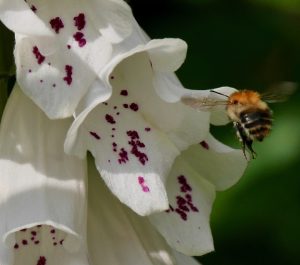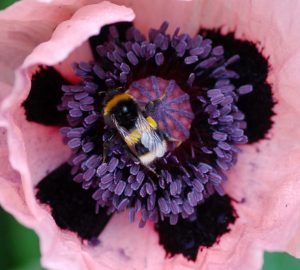Floral heat signatures.

It is well known that bees respond to various signals that plants 'offer' as an encouragement / inducement for pollination - notably size, colour, honey guides, movement, scent etc. Less obvious are the ultra-violet patterns on the petals that can be seen by bees and other insects. Now, research workers at the Univeristy of Bristol have identified another 'sensory signpost' on the floral highway - variations in temperature on the flowers - often corresponding to colourful patterns on the petals.
Scanning the flowers, the researchers (Dr. Heather Whitney et al) found that where there were dramatic patterns that those areas could be 4oC to 5oC warmer than the rest of the flower. These 'hot spots' provide information to insect pollinators, enhancing their foraging efficiency so that bees (for example) can maximise the amount of food (pollen and nectar) that they can take back to the hive -  to help sustain the young of the colony.
to help sustain the young of the colony.
Another interesting finding is that the petals of some flowers have a 'rough' surface - that is, they have cone-shaped surface cells, while others have flat surfaces (the epidermal cells are not raised up). Those with cone shaped cells are generally insect pollinated.
Bees have a tiny claw on each of their six feet that allow them to grab on to these cells. Having secured a grip, the bees can rest and not maintain the beating of their wings - which saves energy. Such 'rough' surfaces also mean that it is still possible for bee to land even in wind and rain.
Comments are closed for this post.
